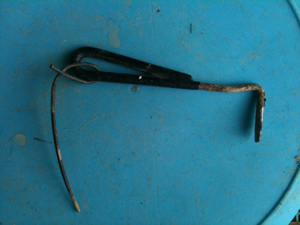

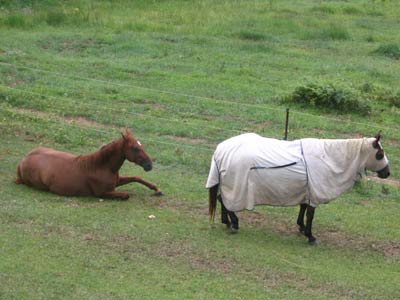
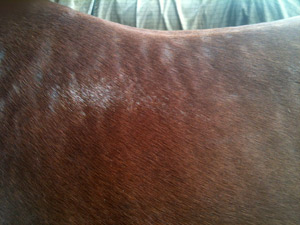
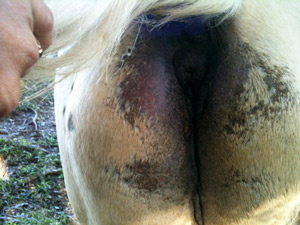
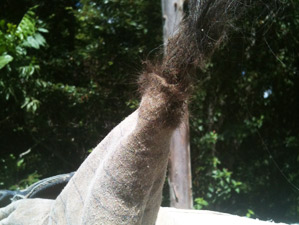
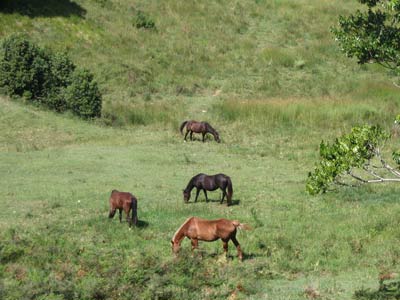
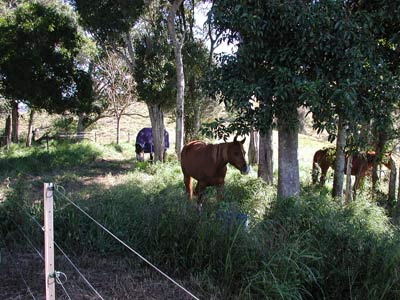



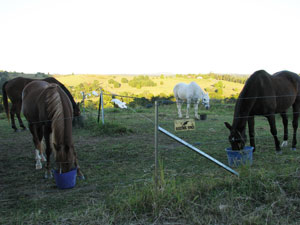
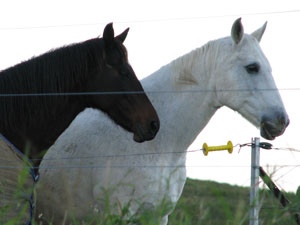
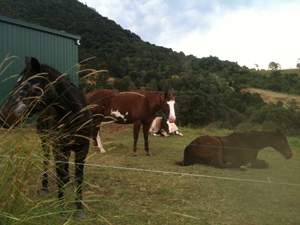
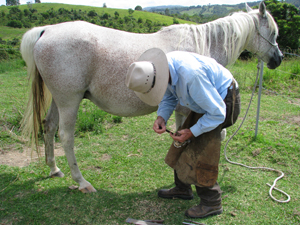
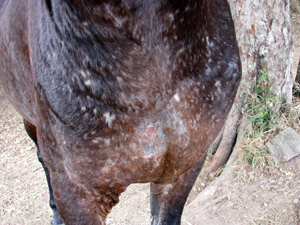
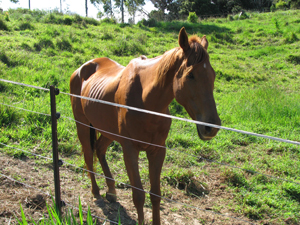
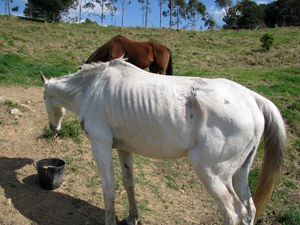
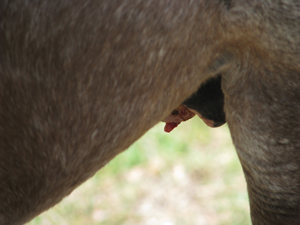
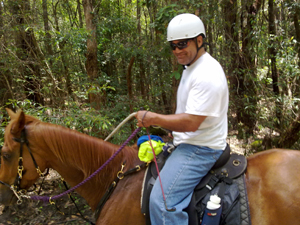
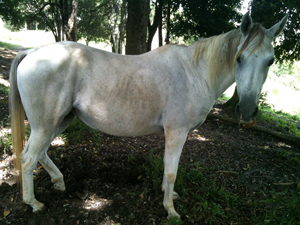

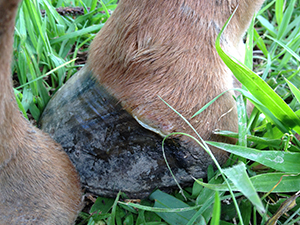
Saddle Fitting
Fitting a saddle is like trying on shoes, only harder because saddle sizes are not standardized in any way. Not every pair of shoes will be comfortable to dance in! And on the same analogy, not every member of your family can wear the same pair of shoes, unless they are same size, same shape, same age, same level of fitness.
Think about saddle fitting as an exercise in physics and geometry. Why have most horse cultures created saddles? To more evenly distribute the weight of the rider on the horse's back, avoiding sharp stress points, like your pelvic "sit" bones. But your "weight equalizer" should not have sharp stress points of its own that make the horse uncomfortable! A tree, whether traditional metal and leather, new composite, or western wooden-- helps equally distribute weight. A tree-less saddle is like a high tech bareback pad-- which can be just fine, depending upon shape of horse, shape of rider, type of work. After all, many traditional cultures spend all day on a horse with no saddle to speak of.
This is a fairly basic guide to saddle fitting, not taking into account a million subtleties of construction, horse asymmetry etc. But it can take you pretty far in getting a saddle that will work for your horse. For now. Four points to evaluate IN THIS ORDER!! 1) Position, 2) Tree size, 3) Balance, 4) Stability (static and dynamic)
1) POSITION: Place saddle where it naturally wants to sit-- this should be with the tree (rivet in English style saddles) two fingers' width behind the hindmost point of the shoulder blade, so it does not interfere with movement. If your saddle tends to slide back, you were placing it too far forward in the first place. The reason for this is not to impede the movement of the scapula (shoulder blades) else the horse will have to hunch and this will cause soreness, short stepping, and girthiness.
2)TREE SIZE: You want the triangle of the front of the tree to closely match the triangle of your horse's withers, so that it is all contacting evenly. You should have 2 inches room between the top of the wither and the pommel for clearance. Once you mount this will reduce, but the saddle must never touch the wither. Look for a clear channel of light through from the back of the saddle along the horse's spine. Flex the horses head around toward you while you have your hand under the side of the saddle in the wither area. If it pinches your hand as you turn the horses head toward you then you know the saddle is too narrow.
If a tree is slightly wide, you can add an extra pad-- like wearing two pairs of socks for slightly large shoes. Make sure pad is not compressible, like most fleece pads. 1/2 inch closed cell foam is best.
3)BALANCE: The lowest point of saddle should fall halfway between pommel and cantle. Put the saddle on horse's back in correct position, after you have established the tree size is appropriate. Let a pencil or biro roll to lowest point in seat. If the pencil stops forward or behind middle of the seat, the balance is off on this horse and will push your balance off. While occasionally you can shore it up with a wedge pad (shims)-- any pad that does not contact your horse over the entire saddle region will create edges that make high pressure. Better to find a saddle that is correct.
4) STABILITY: The main part of the saddle contacts the horse over the panels in and English style saddle. The shape of this part of the saddle will be dependent upon both tree contour and padding in panels. You can change the latter, but not the former. Some horses are quite concave in saddle region, others straight backed. If you put a curved saddle on a straight horse, it will rock. If you put a straight saddle on a curved horse, it will collapse in the middle, or "bridge". This needs to be assessed standing, and if all is good standing, it needs to be assessed while riding. Someone from the ground must watch the saddle as you ride and observe whether it moves around during ridden exercises.
For cutaway or "balloon" or "keyhole" trees, you can't use the finger rule at the pommel. This is good advise for any saddle shopper: go to a craft store and buy a flexible ruler and a sheet of oaktag poster board. You are going to create an outline of your horse's withers and spine to help fit saddle. Fit the flexible rule over your horse's withers right at the place the tree should end: two fingers behind hindmost part of shoulder blade. Carefully bend it to the exact contour of the horse and then carefully take it off and trace it on the oaktag. Now do the same for the middle saddle region and the cantle region. Finally, lay the flexie right along the spine from the withers to the cantle. You now have four tracings that exactly mimic your horse's back contours. You can cut them out (or just use measurements) and take them to the saddlery to find the best few saddles to try. Or fax it to a far off used saddle dealer, and let them find the best fit.
For Western saddles, the blanket takes the place of the saddle panels. So when you evaluate fit without a blanket, look for two fingers width only. A Western tree with the front skirt will cover the shoulder blade, but allow free movement. Be sure that the back skirt is not impeding movement of the stifle. Balance and stability is the same procedure
Good Luck!"
Posted by Karen Gellman, DVM, PhD